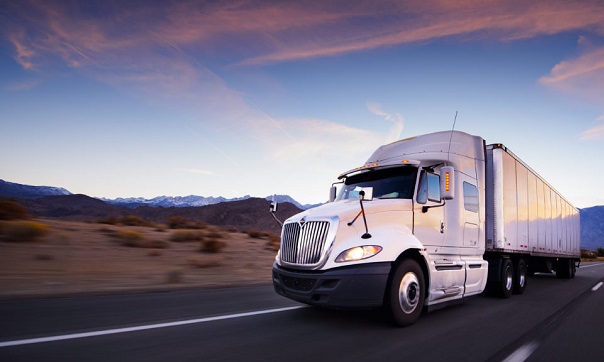Enhance Last-Mile Delivery Performance While Saving Millions

From e-commerce, grocery shopping and food delivery to car repairs, home maintenance and laundry services, there’s a website or mobile app to meet all your needs. However, our world, which seems to live and thrive on intangible software, would quickly fall apart without the very physical, tangible process that is last-mile delivery.
The last-mile delivery industry was already growing rapidly prior to 2020, but the COVID-19 pandemic greatly accelerated its development and made it a crucial part of modern life.
In 2021, the global last-mile delivery market was worth $40.5 billion and is expected to reach $123.7 billion in 2030, at a compound annual growth rate of 13.21%. The high stakes in the industry mean that companies operating in this space face intense competition, and they strive to maximize value and efficiency in an effort to get an edge over the rest.
However, they face many challenges. Let’s briefly look at some of them:
Cost: Last-mile delivery can be expensive due to the number of miles driven and the number of deliveries made. It can also be expensive for businesses to provide customers with tracking information, to handle returns and refunds, and to provide customer support.
Traffic and congestion: Traffic and congestion can significantly delay deliveries, especially in urban areas with high levels of traffic. This can lead to missed delivery windows and frustrated customers.
Limited access: Some locations, such as high-rise buildings or gated communities, can be difficult for delivery trucks to access. This can lead to additional costs for businesses in the form of additional labor or the use of specialized delivery vehicles.
Customer availability: Customers may not be available to receive their deliveries due to their schedules or other commitments. This can lead to additional costs for businesses in the form of re-delivery fees or returned packages.
Sustainability: Last-mile delivery can contribute to air pollution and traffic congestion due to the high number of short trips made by delivery vehicles. Companies are increasingly looking for ways to reduce the environmental impact of last-mile delivery, such as using electric or hybrid vehicles, consolidating deliveries and using alternative modes of transportation such as bikes or drones.
Inflexible delivery options: Customers often expect a wide range of delivery options, such as same-day or next-day delivery, delivery to a specific location (such as a front porch or a nearby store), and the ability to track their delivery in real time. Providing these options can be logistically challenging and costly for businesses.
Lack of integration with other systems: Last-mile delivery often involves multiple parties, including the retailer, the transportation company, and the delivery driver. Coordinating these parties and ensuring that they have the information they need can be difficult if the systems they use are not integrated.
Complex returns process: Returns are a common occurrence in e-commerce, and the returns process can be particularly challenging for last-mile delivery. Businesses need to be able to handle returned packages efficiently and cost-effectively, which can be difficult if the package is not in the same location as the customer.
Lack of visibility into delivery process: Businesses may not have visibility into all aspects of the last-mile delivery process, which can make it difficult to identify and resolve problems in a timely manner.
Security concerns: Packages left unattended on porches or in other locations can be vulnerable to theft. Businesses need to find ways to ensure the security of packages during the delivery process.
Limited capacity: Last-mile delivery companies may have limited capacity, especially during peak periods such as the holiday season. This can lead to delays and frustrated customers.
Weather-related delays: Inclement weather can cause delays in last-mile delivery, which can be frustrating for customers who are waiting for their packages.
Customer service: Providing good customer service is essential in e-commerce, and this can be particularly challenging in the context of last-mile delivery. Businesses need to be able to handle customer inquiries and complaints in a timely and effective manner.
In overcoming most, if not all of these problems, a high-quality route optimization API can be the difference maker. Here’s how:
- Lowering costs across the board
By using advanced routing algorithms, delivery companies can determine the most efficient path for a given delivery based on various factors such as the size and weight of the delivery vehicle, type of terrain, weather conditions, and the priority of stops. This optimization of the last mile of the delivery process can lead to numerous cost savings including reduced fuel expenses, fewer hours worked for drivers and lower labor costs, as well as decreased wear and tear on fleet vehicles resulting in lower maintenance costs. Overall, optimizing routes is an effective way to improve the return on investment of a last-mile delivery operation.
- Increasing efficiency of operations
Some route optimization APIs — like NextBillion.ai’s — offer vehicle-specific routing capabilities to ensure optimal performance for any type of fleet. This is important because different types of vehicles, such as e-scooters, motorbikes, cars, vans, and trucks, all navigate roads differently. By providing drivers with the most efficient routes for their specific vehicle type and assigned stops, last-mile delivery companies can reduce the number of miles driven and the amount of time spent on each delivery, enabling them to complete more deliveries per hour.
This increased efficiency can allow delivery companies to expand their service coverage area without having to expand their fleet of vehicles and drivers. It can also make it easier to scale operations when they do want to expand their fleet. The overall result of these improvements is strengthened unit economics and increased profitability.
- Maximizing resilience to disruptions
An effective routing optimization API accounts for a variety of factors to generate the most efficient routes, including live and historical traffic data, weather conditions, time of day, and regional road rules and closures. This helps delivery companies stay up to date on what’s happening on the roads and make adjustments as needed.
There may be times when stops need to be added or removed on an already optimized route. While not a common feature, some route optimization APIs offer the ability to reorder stops during a route to accommodate these changes. This can be crucial for maintaining operational efficiency and avoiding disruptions. With these capabilities, delivery companies can effectively navigate unexpected delays or disruptions, such as last-minute stop location changes, traffic jams, inclement weather and road closures for maintenance or events.
- Elevating customer satisfaction
By finding the fastest routes and reducing delivery times, delivery companies can ensure that their delivery promises are kept and customers remain happy. In today’s hyper-competitive delivery market, every minute counts. Many companies are now offering 10- or 15-minute delivery options to set themselves apart and win market share.
Providing fast and reliable delivery is essential for retaining customers and building a strong reputation. Customers expect their packages to be delivered quickly and efficiently, and a company that can consistently meet these expectations is sure to stand out in the market. Optimizing the final leg of the delivery enables companies to do just that.
The last-mile delivery industry is expected to experience significant growth and increased competition in the upcoming years. To thrive in this environment, businesses must differentiate themselves from competitors, operate efficiently and maximize profits. Perhaps the most effective way to achieve these goals is by utilizing a top-performing route optimization API, which offers a range of features to support success in the industry. So, what are you waiting for?
Author:

Gaurav Bubna
Co-Founder
NextBillion.ai
Gaurav Bubna heads product direction, innovation and execution at NextBillion.ai. A Fortune India ‘40 Under 40’ recipient, his expertise lies in aligning product vision with unified customer experience. An IIT Bombay alumnus, Gaurav has spearheaded several zero-to-one initiatives across industries, including ride-hailing, food delivery, logistics, mobility, finance, and HR. Gaurav has led product teams at Grab, Ola, Zlemma and Morgan Stanley.
Published in Telematics Wire


